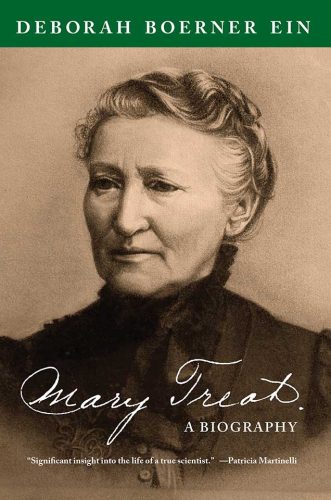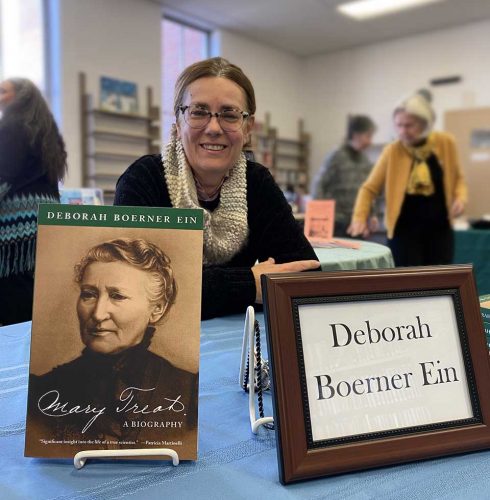Reader’s Treat
Local author pens first full-length biography of Mary Treat.

Available Now…
…on Lulu as well as Amazon and other major booksellers. For updates on book signings, visit marytreat.com.
* * *
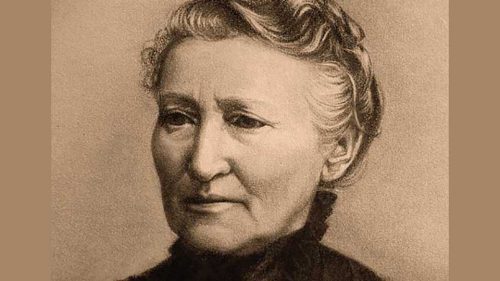 Readers flock to read the works of accomplished novelist Barbara Kingsolver; I especially enjoy those with an environmental component. Often her protagonist has naturalist leanings. In 2018, when it was announced that she was coming out with a new novel set in Vineland, and that plant and animal scientist Mary Treat would be one of the main characters, it created some chatter among historians, botanists, and entomologists, locally and all over the country.
Readers flock to read the works of accomplished novelist Barbara Kingsolver; I especially enjoy those with an environmental component. Often her protagonist has naturalist leanings. In 2018, when it was announced that she was coming out with a new novel set in Vineland, and that plant and animal scientist Mary Treat would be one of the main characters, it created some chatter among historians, botanists, and entomologists, locally and all over the country.
Kingsolver’s Unsheltered is a fictionalized account contrasting two families from two different centuries who lived at the corner of Sixth and Plum streets in Vineland; in the context of the earlier century the neighboring resident was Mary Treat. Kingsolver’s novel became a New York Times bestseller, and NPR, O – Oprah Magazine, Christian Science Monitor and Newsweek all named it one of the best books of the year.
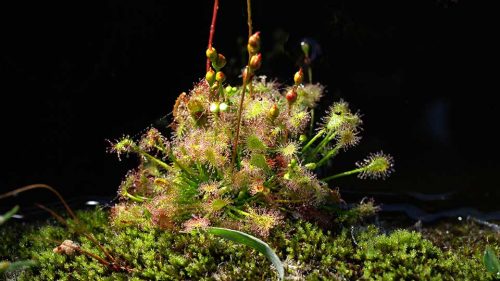
However, many of us who read the book were left with a craving for a broader, factual account of naturalist and author Mary Treat’s life and work. One of the pioneering women involved in bringing nature to a broader audience, she was an entomologist, botanist, plant pathologist, writer, and teacher. Now such a book is available.
It is really fitting, given the background of Mary Treat, that the present-day editor of this weekly newspaper in Vineland would tackle the job of researching and compiling a book about Treat 99 years after her death. We are very fortunate that Deborah Boerner Ein decided to undertake this task and give us a biographical picture of this local personage.
With a degree in forestry and natural resource management from Rutgers, Deborah has lived her life in the Pine Barrens and grew up “picking blueberries” on her family’s farm. Her history gives her a kinship with Treat and an understanding of her work. In the years I’ve been writing this column for SNJ Today, I have found Deborah to have a deep interest and understanding of nature-oriented topics.
A well-written account about the uncelebrated Mary Treat is long overdue. Jon K. Gelhaus, Ph.C., curator of entomology at the Academy of Natural Sciences of Drexel University wrote, “How could Mary Treat have been essentially forgotten when the breadth and depth of her research is outstanding?”
Deborah’s chronicle will go a long way toward rectifying that injustice.
It is fitting that Gelhaus would comment on and review the text, in that during Treat’s life she shared her interests in ants and spiders with Henry McCook, vice president of the Academy of Natural Sciences in the 1870s. Treat also corresponded with many other prominent scientists of her era, including Charles Darwin and Asa Gray.
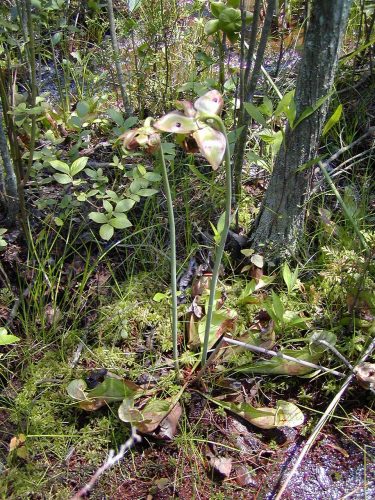 Deborah’s research has resulted in an excellent and engaging narrative of Treat’s life, based on access to the personal papers of Treat archived at the Vineland Historical and Antiquarian Society (VHAS), Treat’s publications, the Charles Darwin Correspondence Project, the letters of Asa Gray, the Treat family genealogy, old newspaper archives, and many other harvested resources. VHAS Curator Patricia Martinelli, who has a keen interest in Treat and Vineland’s founding, fittingly introduces the book in the Foreword.
Deborah’s research has resulted in an excellent and engaging narrative of Treat’s life, based on access to the personal papers of Treat archived at the Vineland Historical and Antiquarian Society (VHAS), Treat’s publications, the Charles Darwin Correspondence Project, the letters of Asa Gray, the Treat family genealogy, old newspaper archives, and many other harvested resources. VHAS Curator Patricia Martinelli, who has a keen interest in Treat and Vineland’s founding, fittingly introduces the book in the Foreword.
Mary Treat was born in 1830; in 1868 she and husband Joseph Treat moved to Vineland seven years after its founding by Charles K. Landis. The Civil War raged from 1861 through 1865, and Mary lived during a time of great political, social, economic, technological, and scientific change. Many intellectuals were drawn to Vineland with the ideals and sense of promise vaunted by Charles Landis.
For readers unfamiliar with the founding of Vineland by Charles Landis and with its utopian vision, Deborah puts an interesting spotlight on the city father’s aspirations: “Landis touted his town in the New York Tribune, as well as other papers in New England and in Chicago and the western territories. The founder’s vision for Vineland, carved out of the wilderness in 1861, was for it to be a utopian village of farming, industry, businesses, churches, schools, and meeting places where its residents could engage in a free and open exchange of progressive ideas. The Vineland layout of farms and tree-lined streets surely would have caught Mary’s attention.”
Passages like this give context to Treat’s life in southern New Jersey, and offer us a glimpse into our local and national history. Deborah’s account has plenty of fabric to keep the reader engaged from many perspectives.
Vineland was a hub of societal discourse. It was the site of New Jersey’s first state convention for universal suffrage in 1868 at the Plum Street Hall, a popular local venue for the presentation of “uncomfortable Truths.” Woman’s suffrage, evolution, child labor, and prison reform were all debated topics. Pre-internet, television, and radio, public forums on topics of social interest were more commonplace than today. Notable orators were paid speakers. You might equate these to TED talks that were limited to the crowd that was present.
Treat’s husband, Joseph, was an outspoken orator on equal rights for women, but Mary Treat was absorbed in studying the plants of the Pine Barrens, entomology, plant pathology, and evolutionary biology implications. She was a well-rounded naturalist studying flora and fauna with intense interest, and she discovered both plant and insect species that preeminent researchers named in her honor.
Deborah also meticulously lists Treat’s works; she wrote six books including a biography of Harvard botanist Gray, considered one of the most important botanists of the 19th century, served as a mentor for Treat and was her longtime correspondent. Treat collected botanical samples for him in both New Jersey and Florida. It was Gray who encouraged Treat to correspond with Charles Darwin.
Mary remained in Vineland from ages 38 until 89. As in a number of interesting and full lives, characters often came, went, and then reappeared. An indexed list of “Who’s Who” in Treat’s life is a much-appreciated tool provided to the reader for reference.
Mary’s life must also be viewed in the context of the technology of her time. When you consider the various modes of transportation in her era and the limitations that those would have placed on her, the breadth of her work is even more astounding. Traveling to other areas of the Pine Barrens, a short car ride for us, would have required a horse or carriage in Mary’s day. Her annual travels to Florida would have been done by a combination of train, steamboat, and carriage.
While Vineland was rather early in generating electric, starting in the late 1890s, Treat would have been in her late 60s by then. Her nighttime studies would have been illuminated by gas lamps or candlelight. Typewriters were not widely in use until the 1880s, and all correspondences I saw were handwritten. One should also consider the technological changes she would have witnessed. Deborah provides a timeline of significant happenings in Mary’s life, as well as delivering Treat’s story with necessary context.
The organization and layout of the book add to its enjoyment and readability. A chapter-by-chapter bibliography is also provided, which for me and many readers is a treasured addition. The content and accompanying tools should make it an invaluable resource for scientists, students, and hobbyists alike.
Most importantly, Deborah’s book gives us a picture of a woman well-deserving of being celebrated by the southern New Jersey community. Our predecessors and their interesting stories enrich our own, and we give context to our very existence in studying the lives of others. Their stories serve as a guide, in this instance especially for young women who wish to pursue careers in the sciences. And history importantly builds a pride of place.
This is a book that you will surely want to give yourself and others this Christmas season. And who knows, maybe someday we will find D. Boerner Ein’s Mary Treat: A Biography getting the same accolades as Barbara Kingsolver’s fictional account. In this case the true story is far more fascinating.
* * *
Readers of this newspaper know Deborah Boerner Ein as editor but may not know that she wears many hats, all of which brought her to this project of telling Mary Treat’s story.
She attended Rutgers University, where she earned a Bachelor of Science degree in forestry and natural resource management. She worked “in the field” for a time, including a summer in California’s Plumas National Forest. Returning to the eastern deciduous forest and the New Jersey Pine Barrens, Deborah turned her focus to writing and editing. She has held editorial positions at New Jersey Outdoors, American Forests, Lapidary Journal, Atlantic City Magazine, and The Grapevine.

